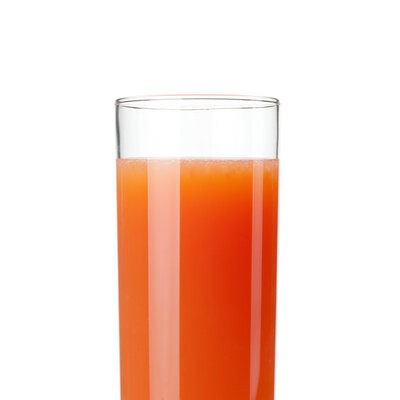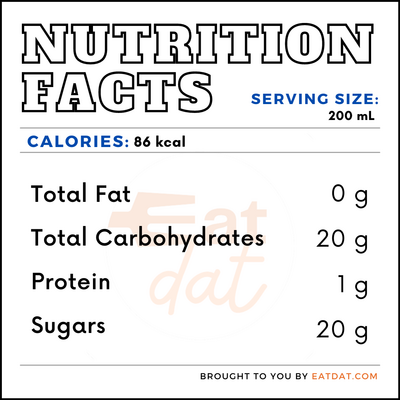
Pomelo Juice
also known as Jambola Juice, Shaddock Juice
What is Pomelo Juice?
Pomelo juice is a fruit juice derived from the pomelo. This fruit has a sweet taste and is similar in flavor to sweet grapefruit juice. It is a citrus fruit that has a soft flesh like an orange and a juicy interior, which is segmented.
- Although the name pomelo used to refer to grapefruit, it is now specifically used for the Citrus maxima fruit, which is an ancestor of grapefruit.
- While these fruits have many similarities, the main differences between them are color (pomelos are pink, yellow, and green) and taste, as grapefruits are more tart.
Some common ways to use pomelo in the kitchen include:
- Marmalade
- Fruit Salad
- Candy
- Juice
- Marinade
Origin of pomelo juice
Pomelos first originated in Malaysia and Indonesia and slowly spread throughout the region. Later on, this fruit was introduced into China, where it has been grown for thousands of years. It is a popular fruit in China, Japan, India, Fiji, Malaysia, Indonesia, and Thailand. Pomelo is used in festive occasions in Southeast Asia, where it is also known as jambola. Captain Shaddock, whose name the fruit also carries in some regions, introduced it to Europe and the Caribbean.
Nutrition
Nutritional profile for pomelo juice (1 cup):

In addition, this juice also contains essential micronutrients such as potassium, copper, riboflavin, thiamine, and vitamin C. This juice is low in calories and has a low glycemic index, which makes it suitable for diabetes patients. Also, this juice contains naringin, a flavonoid which improves glucose tolerance in people with diabetes. Regular consumption of pomelo juice helps in digestion, combating infections and inflammation, and reducing LDL. However, pomelos contain chemicals called furanocoumarins, which disrupt the functions of CYP (cytochrome P450) based medicines that are usually given for cholesterol, blood pressure, heart problems, AIDS, malaria, and depression.
Commercial production
Commercially produced pomelo juice contains sugar, citric acid, xanthan gum, CMC, and agar-agar. First, ripe pomelos are selected. Then, the fruits are cut in half and squeezed. After that, the resulting juice is mixed with these other ingredients. Finally, the liquid is homogenized three times to ensure stability then bottled, capped, and stored for sale.
Pomelo juice recipes
Pomelos are mainly used in salads and juices. However, a few desserts include pomelo juice. Here are a few recipes that use pomelo juice:
FDA regulations
The Food & Drug Administration regulates the growing, harvesting, packing and holding of all raw agricultural commodities. The organization defines fruit juice as any beverage that contains any amount of juice derived from fruits. However, there are no FDA recommendations or regulations for pomelo juice.
References
Vikram Doctor, Pomelos: The largest cultivated citrus fruit with distinctly grown-up character, The Economic Times, https://economictimes.indiatimes.com/pomelos-the-largest-cultivated-citrus-fruit-with-distinctly-grown-up-character/articleshow/16671888.cms?from=mdr
Murunga, Alfred N et al. “Grapefruit Derived Flavonoid Naringin Improves Ketoacidosis and Lipid Peroxidation in Type 1 Diabetes Rat Model.” PloS one vol. 11,4 e0153241. 13 Apr. 2016, doi:10.1371/journal.pone.0153241, https://www.ncbi.nlm.nih.gov/pmc/articles/PMC4830547/
R.P. Bates, J.R. Morris, and P.G. Crandall, Chapter 11, Practical Aspects of Citrus Juice Processing, Principles and practices of small – and medium – scale fruit juice processing, The Food and Agriculture Organization (FAO) of the United Nations, http://www.fao.org/3/y2515e/y2515e13.htm
